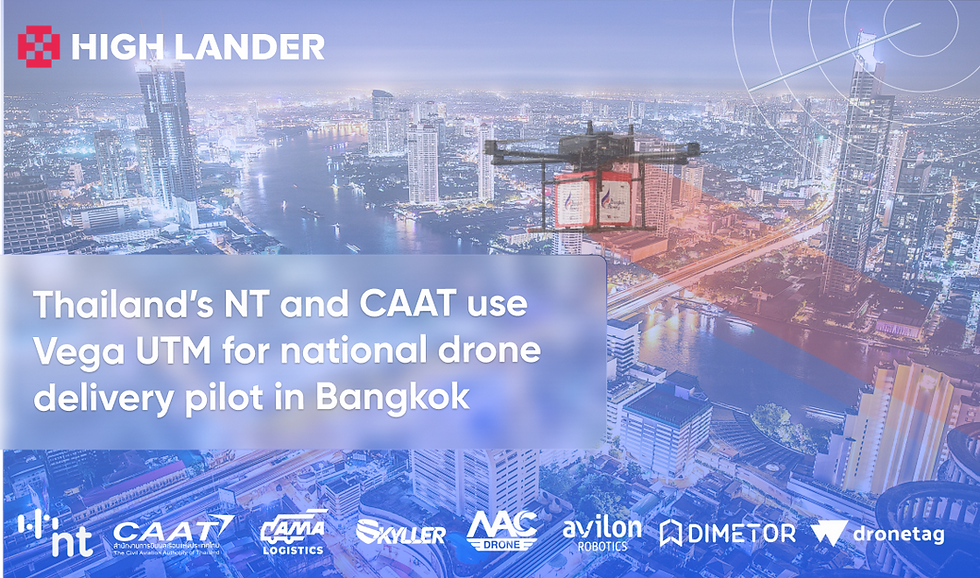Drones and glaciers
- Simon Golstein
- Aug 6
- 3 min read

As we’ve discussed in the past, UAS are great for the environment. Apart from their low carbon footprint, they help us actively protect our planet with applications like animal conservation and wildfire management. In this newsletter we’re focusing on their applications in monitoring the health of glaciers.
The importance of glaciers
Glaciers are huge masses of flowing, semi-permanent ice that are formed from snow compressed in layers over hundreds of years. Many of the world's 200,000+ glaciers are truly ancient, with some glacial ice estimated to be around 4 million years old. They support complex biological ecosystems, including our own; millions rely on their fresh water (they hold around 70 percent of the planet's stock) especially during times of draft. Their immense weight is also integral to geological stability, and they have a major effect on sea levels worldwide too.
For all of these reasons and more, it’s important that we keep accurate track of glacier health. However this is challenging because they are pretty inhospitable environments. Satellite imagery has long been used to get the big picture of their movements and size, but for a closer view, drones are proving their worth in a number of interesting projects.
Sub-surface analysis
In 2023, a team from Stanford University used ice-penetrating radar (IPR) equipment attached to a drone to conduct sub-surface analysis of the Slakbreen glacier, more than 600km north of the Norwegian mainland. The study was conducted in extreme sub-zero temperatures, where electronic equipment such as cellphones struggle to operate without heaters. This study is important because satellite imagery can only tell us the height and position of glaciers - radar tells us things like how temperature changes cause ice to deform, and how liquid water at the bottom affects the speed at which glaciers flow towards the ocean. IPR has been fitted to military aircraft for this purpose since the 1960s, but this new, lightweight version means that this analysis can be carried out without expensive fixed-wing aircraft.
Winter analysis
In 2025, a specialist drone enabled researchers in Greenland to analyze the effect of glacial meltwater in the ocean during the winter season. The winter climate in the fjords of Greenland is harsh, with temperatures averaging -12C and sometimes reaching as low as -50C. The drone was developed especially for this project and features a winch system enabling the team to lower and deploy sensors from the air. This is significant because prior to this, close study of glaciers was largely limited to warmer seasons. UAS have now given us a way to study glacial behavior up close during the harsh winter months. Of course, not all creatures mind the cold weather...
Seal habitats
Pieces of ice released from tidewater glaciers in Alaska provide platforms for harbor seals to rest, give birth and protect their young. Due to a lack of data about how glacial depletion was affecting these platforms, and thus the health of the seal ecosystem, a team of researchers from the University of Alaska deployed a popular off-the-shelf drone and took measurements using its standard camera in a variety of situations, including in windy conditions, and compared them with physically measured dimensions of the same features. They found that error rates never exceeded ten percent, even accounting for drift. The experiment showed that even consumer drones not necessarily designed for scientific study are effective tools in monitoring glacier health.
Early warning system
A major new project set to begin in 2026 will use UAS as part of a coordinated effort to study the Greenland ice sheet. The Greenland-Atlantic Interaction and Early Warning (GRAIL) project will provide an early warning system for the disruption of North Atlantic ocean currents caused by melting glacial ice. It’s very dangerous to get too close to large bodies of ice, which often terminate in towering cliffs from which substantial chunks can break off little warning. To overcome this the team will be using, amongst other equipment, UAS deployed from a polar research ship (the RSS Sir David Attenborough). This is significant because although we already knew that melting glaciers is detrimental to the global climate, this project will provide a deeper understanding of when changes become truly dangerous.
Protecting our planet
As we see from this newsletter, drone inspections have more than commercial uses – they’re helping us save the world we live in. High Lander was founded to enable this new generation of aircraft to operate safely in all manner of applications, and on the way, make our world a cleaner, safer place to live.
Our UAS software platforms have more applications than you might think - to learn more, get in touch to book a free demo.



Comments